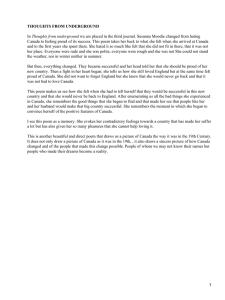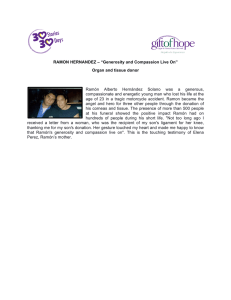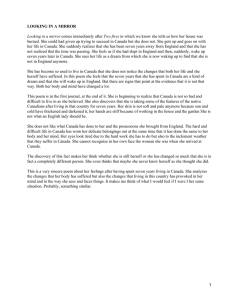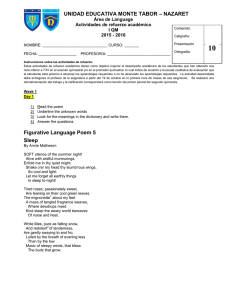Práctica 4 - OCW - Universidad de Murcia
Anuncio
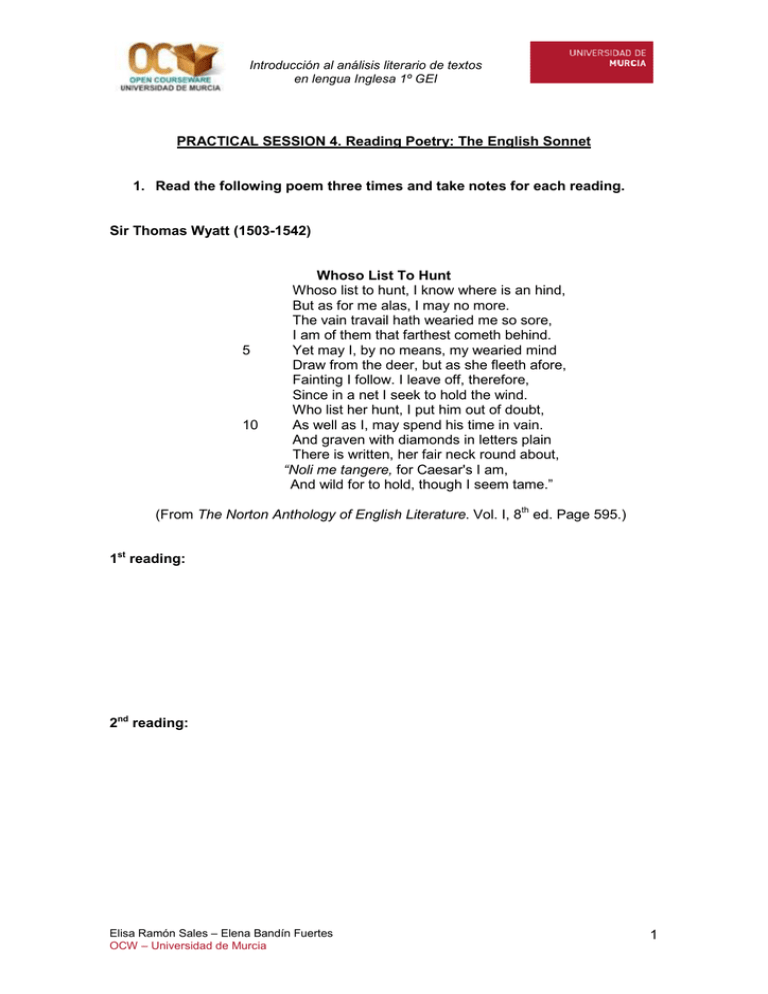
Introducción al análisis literario de textos en lengua Inglesa 1º GEI PRACTICAL SESSION 4. Reading Poetry: The English Sonnet 1. Read the following poem three times and take notes for each reading. Sir Thomas Wyatt (1503-1542) 5 10 Whoso List To Hunt Whoso list to hunt, I know where is an hind, But as for me alas, I may no more. The vain travail hath wearied me so sore, I am of them that farthest cometh behind. Yet may I, by no means, my wearied mind Draw from the deer, but as she fleeth afore, Fainting I follow. I leave off, therefore, Since in a net I seek to hold the wind. Who list her hunt, I put him out of doubt, As well as I, may spend his time in vain. And graven with diamonds in letters plain There is written, her fair neck round about, “Noli me tangere, for Caesar's I am, And wild for to hold, though I seem tame.” (From The Norton Anthology of English Literature. Vol. I, 8th ed. Page 595.) 1st reading: 2nd reading: Elisa Ramón Sales – Elena Bandín Fuertes OCW – Universidad de Murcia 1 Introducción al análisis literario de textos en lengua Inglesa 1º GEI 3rd reading: 2. Answer the following questions about the text: a) What kind of text is it? (The genre) b) Who is the author? c) When was the poem written/published? d) Who is speaking in the poem? (The poetic voice) e) Is the speaker addressing someone in particular? f) What is the speaker’s mood? Is the speaker angry, sad, happy, cynical? How do you know it? Elisa Ramón Sales – Elena Bandín Fuertes OCW – Universidad de Murcia 2 Introducción al análisis literario de textos en lengua Inglesa 1º GEI g) What is the text about? (The subject) h) What is the formal structure of the poem? (The structure) i) Identify the rhyme scheme used in the poem. j) How does the poem use imagery? (Imagery) k) Can you see any ways in which the poem refers to, uses or relies on previous writing? l) Identify other relevant features that appear in the text. Give examples. Elisa Ramón Sales – Elena Bandín Fuertes OCW – Universidad de Murcia 3 Introducción al análisis literario de textos en lengua Inglesa 1º GEI 3. Read the following poem three times and take notes for each reading. William Shakespeare (1564-1616) 5 10 130 My mistress’ eyes are nothing like the sun; Coral is far more red than her lips’ red; If snow be white, why then her breasts are dun; If hairs be wires, black wires grow on her head. I have seen roses damasked, red and white, But no such roses see I in her cheeks; And in some perfumes is there more delight Than in the breath that from my mistress reeks. I love to hear her speak, yet well I know That music hath a far more pleasing sound; I grant I never saw a goddess go; My mistress, when she walks, treads on the ground. And yet, by heaven, I think my love as rare As any she belied with false compare. (From The Norton Anthology of English Literature. Vol. I, 8th ed. Page 1074.) 1st reading: 2nd reading: Elisa Ramón Sales – Elena Bandín Fuertes OCW – Universidad de Murcia 4 Introducción al análisis literario de textos en lengua Inglesa 1º GEI 3rd reading: 4. Answer the following questions about the text: a) What kind of text is it? (The genre) b) Who is the author? c) When was the poem written/published? d) Who is speaking in the poem? (The poetic voice) e) Is the speaker addressing someone in particular? f) What is the speaker’s mood? Is the speaker angry, sad, happy, cynical? How do you know it? Elisa Ramón Sales – Elena Bandín Fuertes OCW – Universidad de Murcia 5 Introducción al análisis literario de textos en lengua Inglesa 1º GEI g) What is the text about? (The subject) h) What is the formal structure of the poem? (The structure) i) Identify the rhyme scheme used in the poem. j) How does the poem use imagery? (Imagery) k) Can you see any ways in which the poem refers to, uses or relies on previous writing? l) Identify other relevant features that appear in the text. Give examples. Elisa Ramón Sales – Elena Bandín Fuertes OCW – Universidad de Murcia 6 Introducción al análisis literario de textos en lengua Inglesa 1º GEI 4. GLOSSARY. Look up the following words in a dictionary of literary terms and write down the definitions: -Close reading: -Tone: -Rhyme: -Rhythm: -Final couplet: -Stanza: -Imagery: Elisa Ramón Sales – Elena Bandín Fuertes OCW – Universidad de Murcia 7
